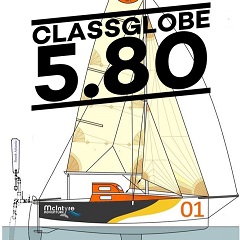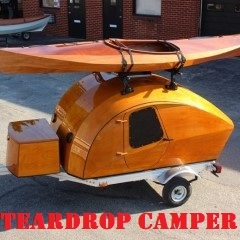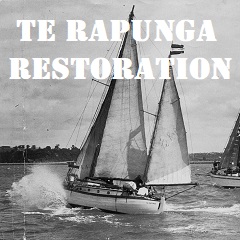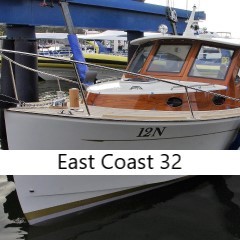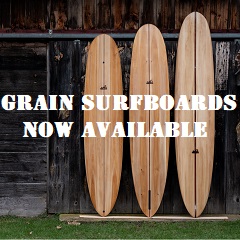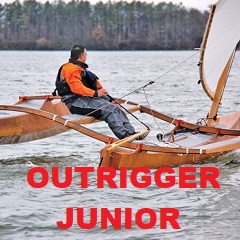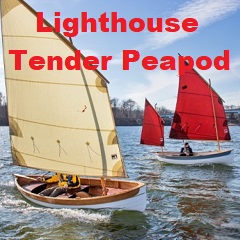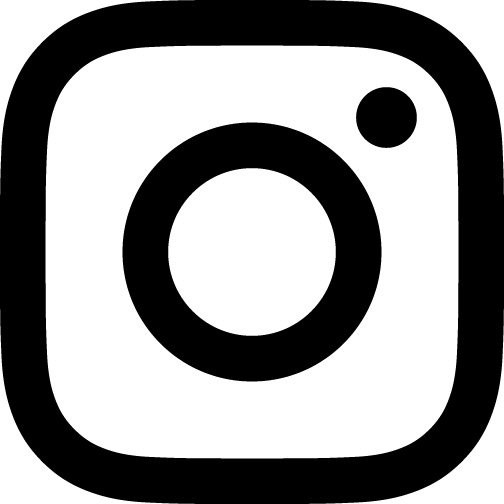Marine Plywood Information
So if you are building a boat and want the best BS1088 Gaboon plywood in Australia, give us a call and we'd be happy to give you a quote.
What exactly is Gaboon marine ply?
Gaboon or Okoume (Aucoumea klaineana) is a medium sized hardwood native to equatorial West Africa. Its major use is in the production of plywood. In its plywood form it has been used extensively in boat building and is still used in the manufacture of lightweight aircraft. Gaboon is one of the species that can be used to make lightweight marine ply under the British Marine Plywood Standard BS1088-1:2003. Gaboon’s air dried density is around 430-480kg per cubic meter as opposed to hoop pine which is around 530-560kg per cubic meter.
The best gaboon marine ply panels used to be manufactured in the Netherlands, Israel and France but with the way that most things in manufacturing have gone much, if not all of the supply available in Australia comes from mills in China, Malaysia or other South East Asian countries. The price the importers pay for this ply might be great from these places but the quality really lets the end user down.
Marine Ply Manufacturing Standards
Marine Plywood is manufactured to an exacting standard to ensure it is fit for purpose. The ocean is not a forgiving place and sub standard materials are quickly shown to be inadequate for the task.
There are two main marine ply standards that we see in Australia namely AS/NZS 2272:2006 (The Australian and New Zealand Standard which our home grown Hoop Pine marine ply is made to) and BS1088-1:2003 (The British standard which is read in conjunction with BS1088-2:2003 which is a standard used for determining glue bond quality in BS1088 marine ply).
Both standards are similar and specify in detail the manufacturing tolerances and allowable defects in ply sheets.
For example;
|
BS1088-1:2003
|
AS/NZS 2272 |
|
Pin knots in face veneers - up to 6 per square meter
of panel surface Pin knots in core veneers - unlimited number |
For Face veneers - Knots (sound intergrown)—not
exceeding 4 mm measured across the grain and not more than four per sheet. For core veneers - sound knots - unlimited in number |
BS1088 as a standard is really quite abused by manufacturers and re-sellers/importers alike. I have seen so many sheets of so called "BS1088 plywood" which have not been manufactured anywhere near the requirements that the standard specifies.
Some defects commonly seen on cheap ply in Australia are as follows;
Problem
Face veneers are not compliant and are so thin that even a very light sanding will cut through into the glue line beneath.
BS1088-1:2003 requires
For panels with a nominal thickness of greater than 3.8 mm, each outer ply shall be not less than 1.0 mm thick after sanding and each inner and core ply shall be not more than 4.8 mm thick.
Problem
Glue bleed through into the outer plies rendering it useless for clear finishing.
BS1088-1:2003 requires
Glue penetration shall only be permitted in areas adjacent to permitted defects, up to a maximum of 5% of the area of each outer ply
I have seen sheets of 4 and 6mm ply that have glue bleed through all over the sheet. One supplier asked me upon enquiry if we were going to be clear finishing because he had bleed through on all their sheets and they would not be suitable.
Problem
Sheet marking. We have seen many sheets of so called BS1088 marine ply that have a small smudged or illegible stamp on the ply that makes a claim that it is BS1088 compliant.
BS1088-1:2003 requires
Panels conforming to this standard shall be indelibly marked on the edge or back with the following information in the order shown:
a) the number and date of this British Standard, i.e. BS 1088-1:2003,1)
and the word “MARINE”;
b) the word “UNBALANCED” if panels are of unbalanced construction;
c) the word “TREATED” if there has been any application of preservative treatment;
d) the nominal panel thickness;
e) the manufacturer’s name or identification mark;
f) the country of manufacture;
g) the panel type, i.e. Standard (S) or Lightweight (LW);
h) the name of the timber species according to BS EN 350-2:1994.
So what we should be seeing on the sheets of standard compliant BS1088 ply is something like;
BS 1088-1:2003, MARINE/UNBALANCED/TREATED/4mm/MD/GB/LW/GABOON
With the "MD" being an example of manufacturers mark, GB being the country of manufacture ( in this case Great Britain) LW showing that the panel type is Lightweight (which is indicative of ADD of species used) and obviously Gaboon is the species. There are some small variations on this but we source ply from both the UK and France and this is what is marked on the sheet as required by the standard.
If you are looking at ply that has not been marked as such, what other part of the standard has not been complied with?
Certification
If you read the British standard it states that
“the accuracy of the claim (of standard compliance) is solely the claimant’s responsibility. Such a declaration is not to be confused with third-party certification of conformity.So probably the biggest problem we face as boatbuilders is that there is a bunch of ply being manufactured that does not comply and both the manufacturers and sellers of the ply are aware of this fact yet they are still happy to tout their product as being BS1088 compliant. Third party certification that the ply has actually been manufactured to the standard is considered to be the most stringent test of compliance. Lloyds Register are one such body that independently assesses products such as Gaboon marine ply against set standards.
The bad ply experience
Unfortunately before a lot of our clients come to us they have already been down the road of being sold "so called BS1088" ply by unscrupulous businesses only to find out that what they have paid for is not compliant to BS1088 at all.
Here's a few stories from our clients;
1. non gaboon internal cores being stained to look like gaboon and the panel being sold as "gaboon throughout" but when cut, the timber inside the ply was almost white in colour. Vendor wouldn't take it back as the sheet had been cut.....
2. One gentleman purchased a kit for a larger boat only to find out very late in the build that the ply was de-laminating, Company offered a better quality (but still non standard compliant ply) to glue on the outside.
3. One client purchased "gaboon" BS1088 ply to find it the internal veneers were different species and hardness and this varied from sheet to sheet which made scarphing a real headache.
4. One client bought a sample around to our workshop and I was able to get a fingernail under the thin face veneer and pull the face veneer off with a complete failure in the glue line.
5. Another brand new kit I have seen from another supplier had very bad de-laminations and voids in the ply veneers.
So to quote an old saying, “oils ain’t oils” or ply aint ply. Whoever you get your ply from, your supplier should be able to provide you with evidence of compliance to BS1088, generally in the form of third party certification. As a general rule of thumb, I ask a supplier if they are familiar with and have a copy of BS1088-1:2003. If they say they don’t, then how can they know if the ply they are selling meets the standard?
So if you are looking for the best quality BS1088 Gaboon ply in Australia please see here, or contact us for further information.

